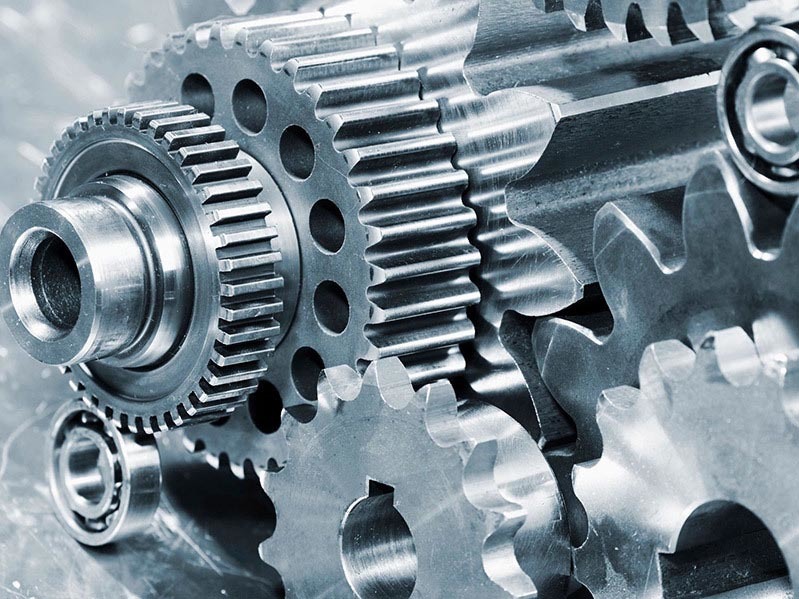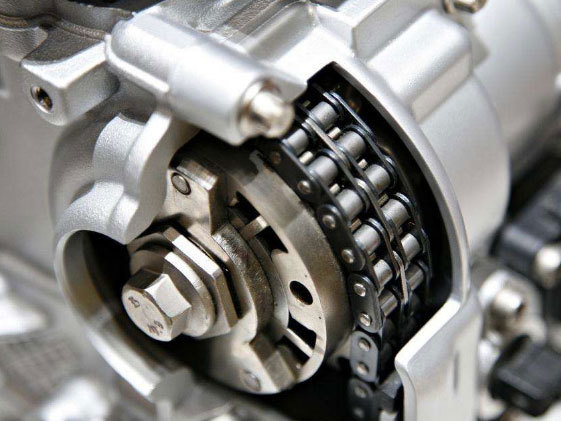News Center
Contact Information
Contact:+86-13706033548
Tel:+86-0593-6016566
Tel:+86-0593-6391548
Mail:fjzt0593@126.com
Fax:+86-05936391928
Address: Yanhu Development Zone, Fu'an City, Fujian Province
Analysis of regular Starting Precautions of Diesel Engine
Release time:
2024-06-13
A diesel engine is an internal combustion engine fueled by diesel. Diesel engines are compression ignition engines, which are often called Diesel engines after the main inventor. The energy released in combustion acts on the top surface of the piston, pushing the piston and converting it into rotating mechanical work through the connecting rod and crankshaft. Precautions for regular starting of diesel engine: Disengage the diesel engine from the transmission device or place the gearbox in the neutral position. Place the parking solenoid, electrical switch and mechanical operating device in the operating position. For a diesel engine with a full-range governor, place the throttle slightly higher than the idle speed position, and for a cold vehicle diesel engine with a two-pole governor when starting, depress the accelerator pedal to the end and release it before the starter motor is engaged Pedal. Note: In order to prevent damage to the starting diesel generator set, the meshing time of the starting motor shall not exceed 30 seconds at a time, and the continuous starting time interval shall be 2 minutes. The diesel oil pressure gauge must show the reading within 15 seconds after starting. When the cold start of the diesel engine, the speed should be slowly increased to ensure that the bearing is sufficiently lubricated and the oil pressure is stable. After 1000r/min idling for 3~5 minutes, the load can be gradually increased. It is strictly prohibited to accelerate the loading operation immediately after starting the diesel engine. Note: diesel engine idle running time is not too long, otherwise it will damage the diesel engine. Because the temperature of the combustion chamber is low at idling speed, the fuel cannot be completely burned, which causes carbon deposits, blocks the nozzle hole of the injector, and blocks the piston ring and valve. If the cooling water temperature is lower than 60°C, the fuel will also wash away the oil on the surface of the cylinder liner and dilute the oil in the oil pan, so that all moving parts cannot be properly lubricated.
A diesel engine is an internal combustion engine fueled by diesel. Diesel engines are compression ignition engines, which are often called Diesel engines after the main inventor. The energy released in combustion acts on the top surface of the piston, pushing the piston and converting it into rotating mechanical work through the connecting rod and crankshaft.
Precautions for regular starting of diesel engine: Disengage the diesel engine from the transmission device or place the gearbox in the neutral position. Place the parking solenoid, electrical switch and mechanical operating device in the operating position.
For a diesel engine with a full-range governor, place the throttle slightly higher than the idle speed position, and for a cold vehicle diesel engine with a two-pole governor when starting, depress the accelerator pedal to the end and release it before the starter motor is engaged Pedal.
Note: In order to prevent damage to the starting diesel generator set, the meshing time of the starting motor shall not exceed 30 seconds at a time, and the continuous starting time interval shall be 2 minutes.
The diesel oil pressure gauge must show the reading within 15 seconds after starting. When the cold start of the diesel engine, the speed should be slowly increased to ensure that the bearing is sufficiently lubricated and the oil pressure is stable. After 1000r/min idling for 3~5 minutes, the load can be gradually increased. It is strictly prohibited to accelerate the loading operation immediately after starting the diesel engine.
Note: diesel engine idle running time is not too long, otherwise it will damage the diesel engine. Because the temperature of the combustion chamber is low at idling speed, the fuel cannot be completely burned, which causes carbon deposits, blocks the nozzle hole of the injector, and blocks the piston ring and valve. If the cooling water temperature is lower than 60°C, the fuel will also wash away the oil on the surface of the cylinder liner and dilute the oil in the oil pan, so that all moving parts cannot be properly lubricated.
Related News
The throttle cannot be slammed after the diesel engine is cold started.
Insufficient cooling water of diesel generators will reduce their cooling effect, and the diesel engine will overheat due to lack of effective cooling; excessive cooling water and oil temperature will also cause the diesel engine to overheat. At this time, the main thermal load of the diesel generator cylinder head, cylinder liner, piston assembly and valve is heavy, and its mechanical properties such as strength and toughness drop sharply, which increases the deformation of the parts, reduces the matching gap between the parts, and accelerates the wear of the parts., In severe cases, cracks and stuck parts may occur. The overheating of the diesel generator will also worsen the combustion process of the diesel engine, causing the injector to work abnormally, the atomization is poor, and the carbon deposit increases. After the diesel generator set is turned off, the circulation of the cooling system water stops, the heat dissipation capacity is sharply reduced, and the heated parts lose cooling, which is easy to cause the cylinder head, cylinder liner, cylinder block and other parts to overheat, produce cracks, or cause the piston to expand excessively and get stuck in the cylinder liner. Inside. On the other hand, when the diesel generator stops without idling cooling, the friction surface will contain insufficient oil, and when the diesel engine starts again, it will aggravate the wear due to poor lubrication. Therefore, the diesel generator should be unloaded before flameout, and gradually reduce the speed, no-load operation for a few minutes. If the throttle is slammed, the speed of the diesel generator will rise sharply, which will cause some friction surfaces on the aircraft to wear severely due to dry friction. In addition, when the throttle is hit, the piston, connecting rod and crankshaft receive large changes in force, causing severe impact and easy damage to the parts. When the diesel generator is cold-started, due to the high oil viscosity and poor fluidity, the oil pump is insufficiently supplied, and the friction surface of the machine is poorly lubricated due to lack of oil, causing rapid wear, and even failures such as cylinder pulling and tile burning. Therefore, the diesel engine should run at idle speed after cooling and start to heat up, and then run with load when the standby oil temperature reaches 40 ℃ or above; the machine should start with a low-speed gear and drive for a certain mileage in each gear in sequence until the oil temperature is normal and the fuel supply is sufficient After that, it can be converted to normal driving. The diesel engine runs when the oil is insufficient. At this time, the insufficient oil supply will cause insufficient oil supply on the surface of each friction pair, resulting in abnormal wear or burns. For this reason, before the start of the diesel generator and during the operation of the diesel engine, it is necessary to ensure sufficient oil to prevent cylinder pulling and tile burning due to lack of oil.
2024-06-13
The working principle of silent generator
The working principle of the silent generator is basically the same as that of other generators, but it is different in terms of appearance and internal design. The silent generator usually consists of two main parts: the generator and the sound box. 1. Generator The generator is a device that converts mechanical energy into electrical energy, and it is also the core component of the silent generator. The generator usually consists of two parts, a rotating rotor and a stator. In the generator, the rotor generates electromotive force relative to the stator through the magnetic field, thereby generating electrical energy. 2. Static sound box The sound box is part of the sound insulation design and is usually composed of sound insulation materials and sound insulation structures. The interior of the sound box is divided into two soundproof rooms, one is the engine room and the other is the generator room. The engine room and the generator room are connected by an air passage. A fan blows air from the engine room to the generator room to maintain circulating ventilation. This removes exhaust gases, maintains operating temperature and extends generator life.
2024-06-13






